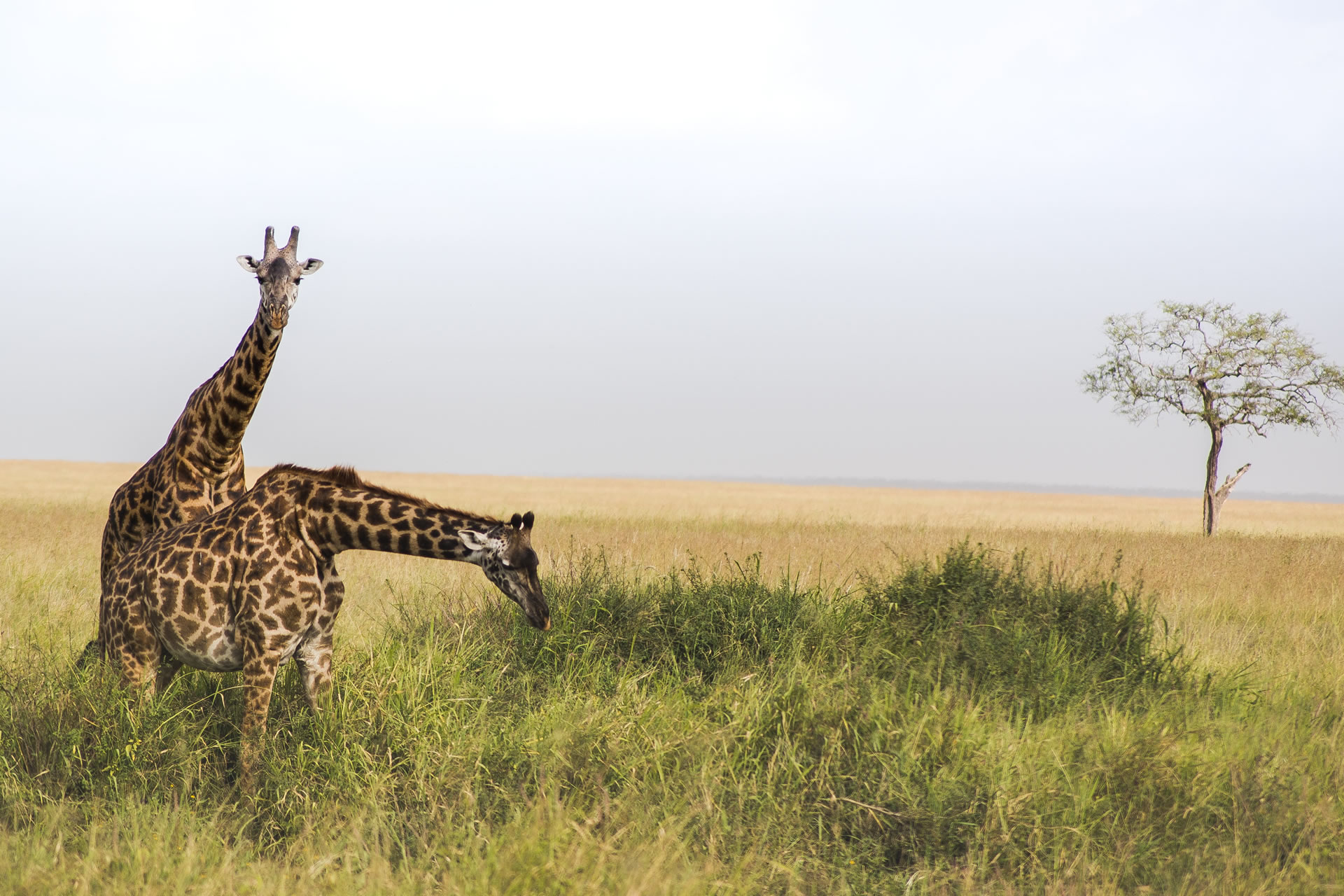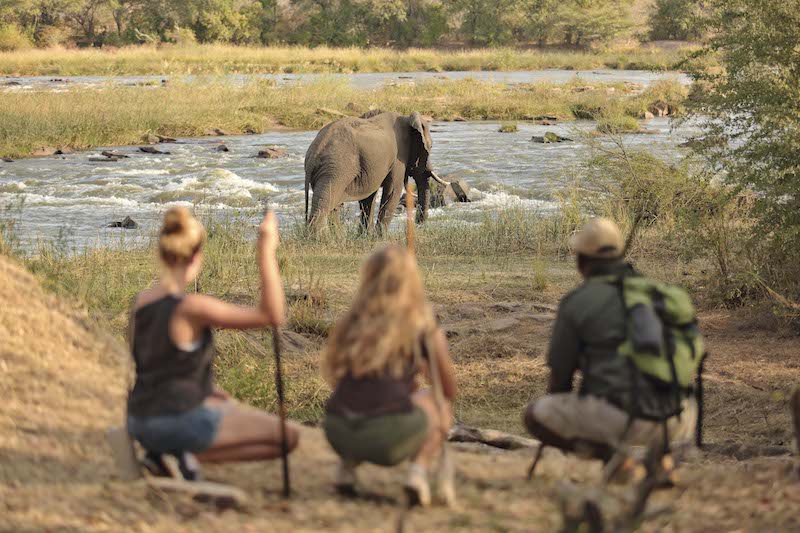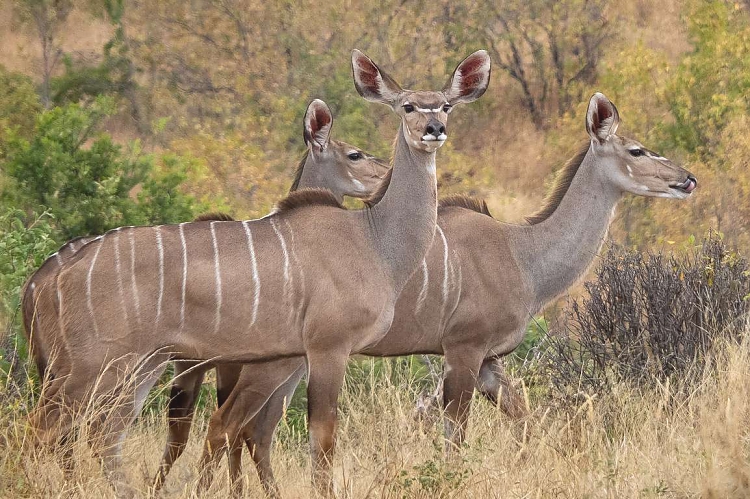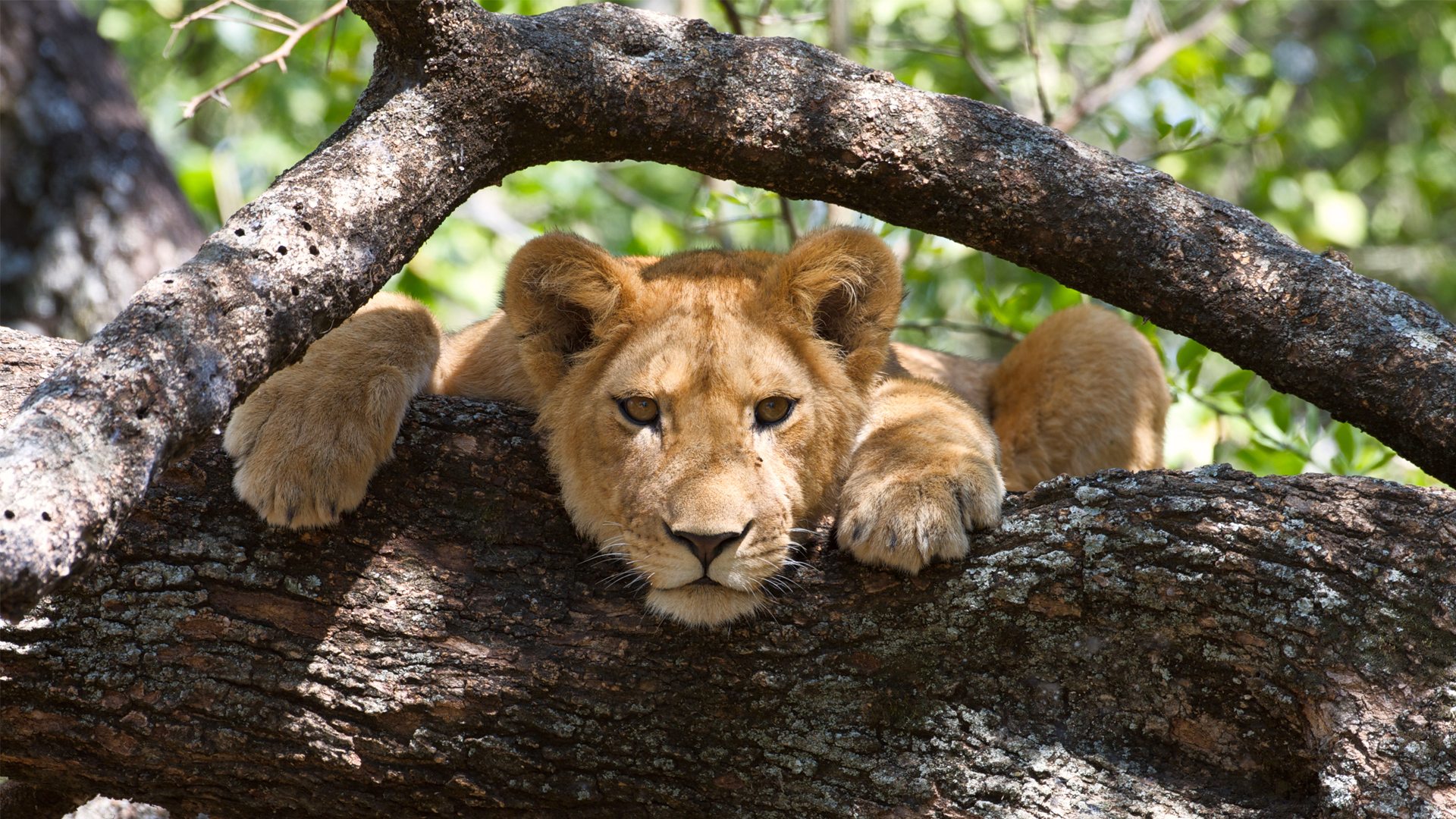Africa is a vast continent with the most diverse countries in the world. Filled with lush inland forests and picture-perfect beaches, Africa is a growing tourist attraction in itself. Here is the list of the best tourist attractions in Africa.

The Serengeti National Park is situated in the Mara Region and it is Tanzania’s oldest national park. It is famous for its annual migration of over 1.5 million white bearded or brindled wildebeests and over 250,000 zebras and for its numerous crocodiles. It is also known for its wealth in other resident wildlife particularly ‘the Big Five’. Serengeti is believed to hold the largest population of Lions in Africa due to the abundance of prey species. Leopards are commonly seen in the Seronera region but are present throughout the park. The African elephant are recovering from population lows due to poaching in the 1980’s and are largely found in the northern regions of the park. Black Rhinoceros are mainly found around the kopjes in the center of the park. African Buffaloes are still in abundance. The park also boasts of other species including cheetah, gazelles, topi, hyena, impala, eland, African wild dog, waterbuck, baboons, and giraffes. It is also home for about 500 bird species including ostrich, kori bustard, crowned crane, secretary bird, lovebirds, marabou stork, martifal eagle and many other vulture species.
The Arusha national park covers Mt. Meru, a prominent volcano with an elevation of 4566m in the Arusha region of north eastern Tanzania. The park is small but has spectacular landscapes in three distinct areas. In the west, the Meru Crater funnels the Jekukumia River, the peak of Mt Meru lies on its rim. Ngurdoto in the south-east is grassland. Momella lakes in the north-east have varying algal colours and are known for their wading birds. Mt. Meru is the second highest peak in Tanzania after Mt. Kilimanjaro. It forms a backdrop to views from the park to the east. Arusha National Park lies on a 300km axis of Africa’s famous national parks, running from Serengeti and Ngorongoro crater.


The crater has one of the densest known populations of lions. On the crater rim are leopards, elephants, mountain reedbuck and buffaloes. The rhinoceros are also found at the crater. From a distance in the large lake in the middle of the crater hundreds of flamingoes form a pink like border to the lake. Animals in the crater include most of the species found in East Africa but there are no topis, giraffes, impalas, oribis or crocodiles. The other major source of water in the crater is Ngoitokitok Spring near the eastern crater wall. There is a picnic site here open to tourists and huge swamp fed by the spring and the area is inhibited by hippopotamus, elephants, lions and many others. Many other small springs can be found around the crater’s floor and they are important water supplies for the animals and local Maasai people.
Mikumi is Tanzania’s fourth-largest national park, and the most accessible from Dar es Salaam. With almost guaranteed year-round wildlife sightings, Mikumi makes an ideal safari destination for those without much time. Within its 3230 sq km – set between the Uluguru Mountains to the northeast, the Rubeho Mountains to the northwest and the Lumango Mountains to the southeast – Mikumi hosts buffaloes, wildebeests, giraffes, elephants, lions, zebras, leopards, crocodiles and more, and chances are high that you’ll see a respectable sampling of these within a short time of entering the park. The most reliable wildlife watching is around the Mkata floodplain, to the northwest of the main road, with the open vistas of the small but lovely Millennium (‘Little Serengeti’) area a highlight. This area is especially good for spotting buffaloes – often quite near the roadside – as well as giraffes, elephants and zebras. Another attraction: the Hippo Pools, just northwest of the main entry gate, where you can watch hippos wallowing and snorting at close range, plus do some fine birding.


Tarangire National Park is in northern Tanzania, just south of Lake Manyara. This is a protected area of colossal baobabs, grassy plains and huge herds of elephant. The park is one of the most underrated of Tanzania’s attractions, receiving just a fraction of the Serengeti’s visitors, which means more space and exclusivity for those who do make it to Tarangire. As well as 300-strong herds of elephant, visitors will find big groups of buffalo and healthy populations of lion and leopard. During the dry season, Tarangire has the highest concentration of mammals in the country. There are wild dog and rare antelope such as gerenuk, plus more than 550 species of birds to spot throughout the year. Tarangire is the ideal park for those who want to explore beyond game drives. Walk through the savannah to study the smallest creatures and learn about tracking animals. Soar through the sky in a hot-air balloon at dawn or head out on a night drive to find nocturnal wildlife.
Selous Game Reserve (GR) aka the Nyerere National Park is a 21,081 sq. mile park in southern Tanzania, the largest national park in the country. The park is home to one of the world’s largest wildlife sanctuaries. Safaris at Selous Game Reserve are renowned for their picturesque and pristine setting and the reserve itself was designated a UNESCO World Heritage Site in 1982 as a protected nature reserve.


Ruaha is an astonishing park which offers a fascinating variety of landscapes and un touched nature. Ruaha, at 10,300sq km, is a naturalist’s paradise which provides even the most experienced travelers with something new. The undulating topography, glorious river and majestic trees combine to produce one of Africa’s most captivating landscapes. Situated in central Tanzania, the Ruaha National Park is the second biggest park in Tanzania. Ruaha National Park forms the core of a wild and extended ecosystem covering about 40,000 sq km and provides home to Tanzania’s largest elephant population. In addition to the elephants, which are estimated to number about 12,000, Tanzania’s largest national park hosts large herds of buffaloes, greater and lesser kudus, Grant’s gazelles, wild dogs, ostriches, cheetahs, roan and sable antelopes, and more than 400 different types of birds. Ruaha is notable for its wild and striking topography, especially around the Great Ruaha River, which is its heart. Much of this topography is undulating plateau averaging about 900m in height with occasional rocky outcrops and stands of baobabs. Mountains in the south and west reach to about 1600m and 1900m, respectively. Running through the park are several ‘sand’ rivers, most of which dry up during the dry season, when they are used by wildlife as corridors to reach areas where water remains.
Lake Manyara is part of the northern circuit of national parks in Tanzania. A popular route is to start in Arusha and visit Lake Manyara before continuing to Serengeti National Park, Ngorongoro Conservation Area, and finishing your adventure at Arusha. These attractions can be combined as part of a 5-6 day itinerary. Although Lake Manyara National Park does not contain as much wildlife as its bigger sisters, the Ngorongoro Crater and the Serengeti, scientists believed that Lake Manyara contained one of the highest concentrations of wildlife in Africa during the 1980s.


Harbouring one of East Africa’s great forests, Udzungwa Mountain National Park has an area of 1990 sq km, bordered by the Great Ruaha River to the north, with Mikumi National Park and Selous Game Reserve located further gto the north and east. Protected as a national forest reserve until 1992 when it was commissioned as National Park, Udzungwa Mountains is undoubtedly one of the few true virgin and unique forested lands remaining in the world. The major attractions include its biologically diverse forest, harbouring some plant species found nowhere else in the world, from a tiny African violet to 30-metre high trees. Apart from the forest, which acts as a water catchment area and having a large number of endemic species of both animals and plants, the park has spectacular mountains scenery, grasslands, rocks, rivers and waterfalls. One of the most interesting sights is the presence of two indigenous species of primates, the Iringa red colobus monkey and the Sanje Crested Mangabey, not known until 1979. Apart from providing habitat to about six species of primates, its plateau contains populations of elephants, buffalos, lions, leopards, African hunting dogs and several forest bird species. Walking safaris to the Sanje River waterfalls (170 metres) is one of the popular activities in this park. Udzungwa Mountains can conveniently be combined with game drives in nearby Mikumi National Park, an hour·s drive to the north, or be included in the Ruaha National Park (4-5 hours drive) and Selous Game Reserve itineraries. The park can be visited throughout the year although it is a bit slippery during the wet rainy season. The dry season extends from June to October.